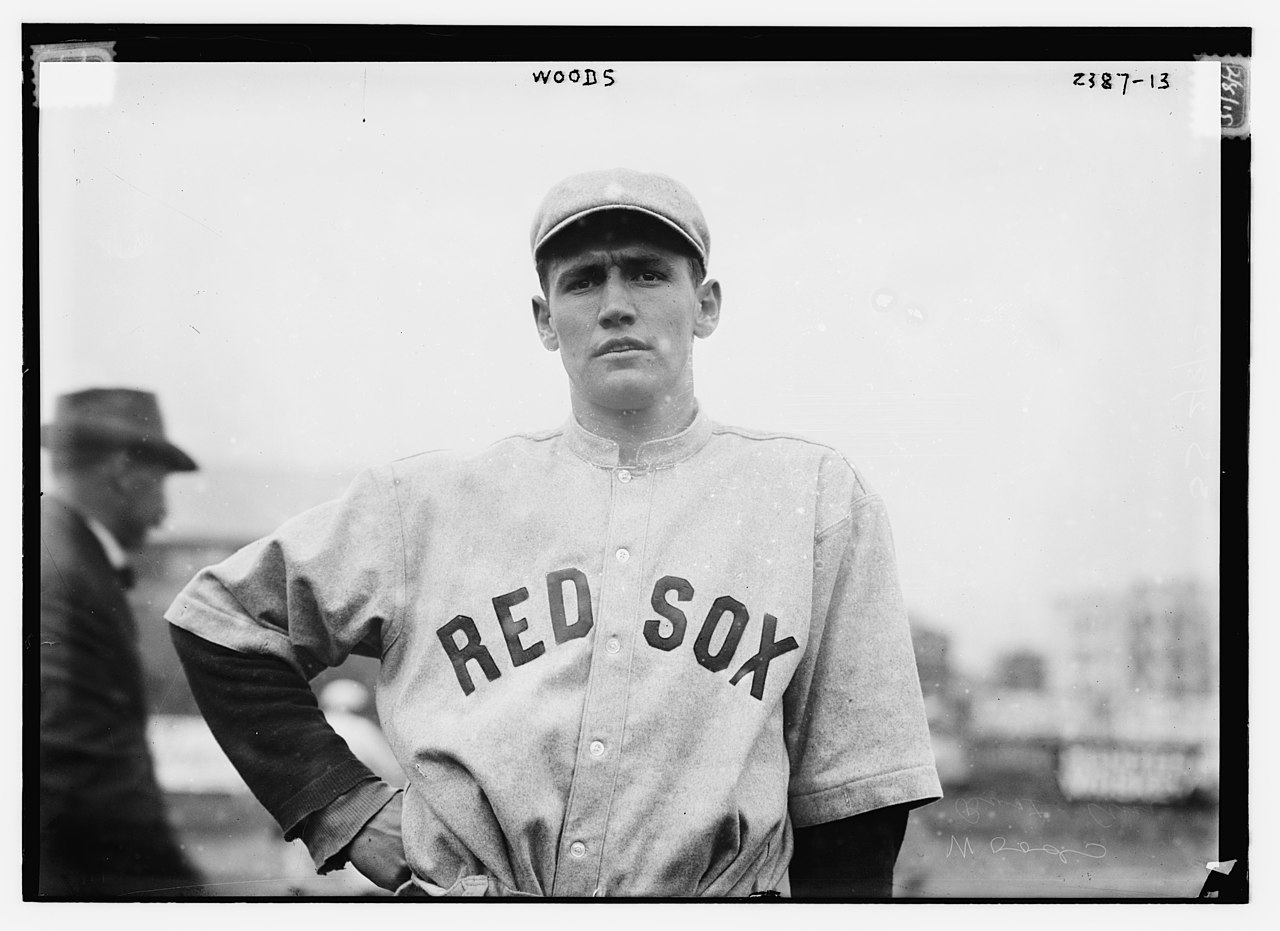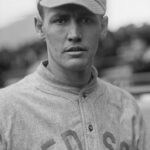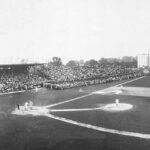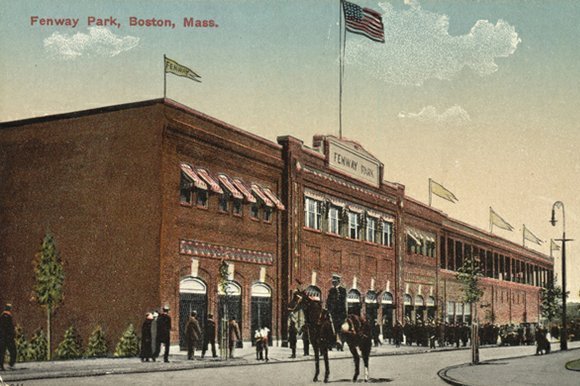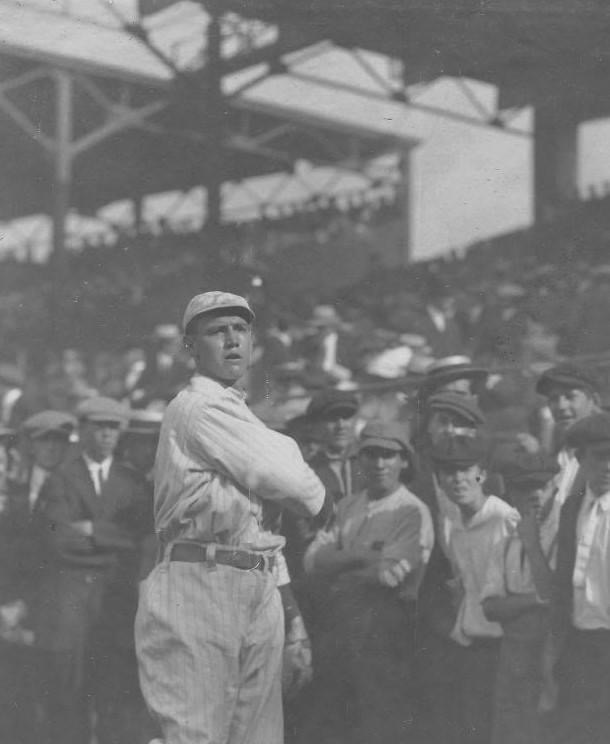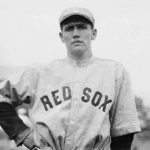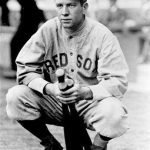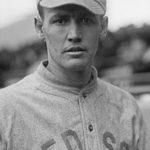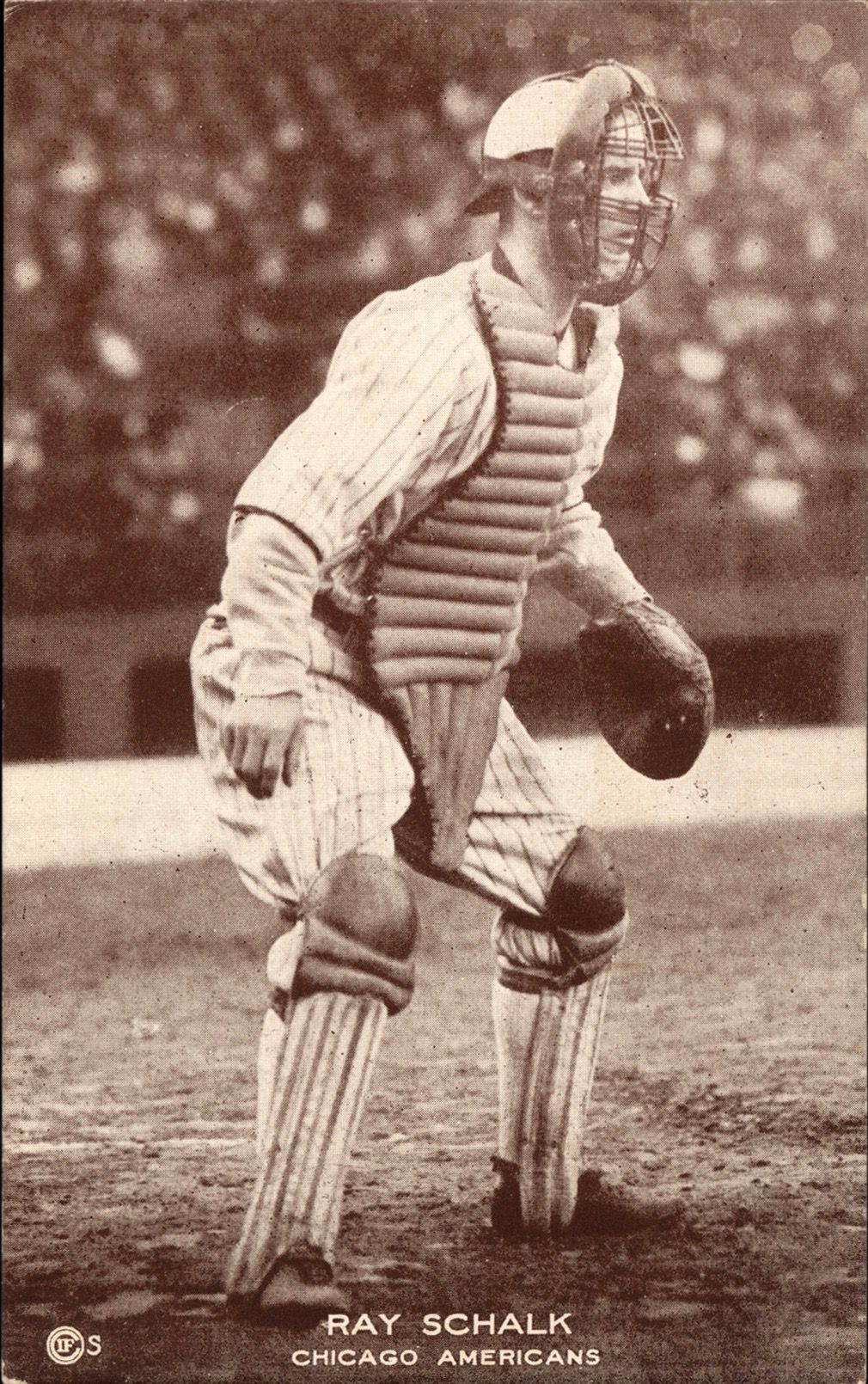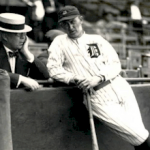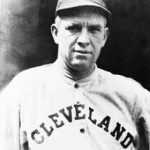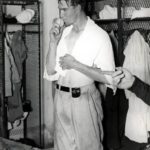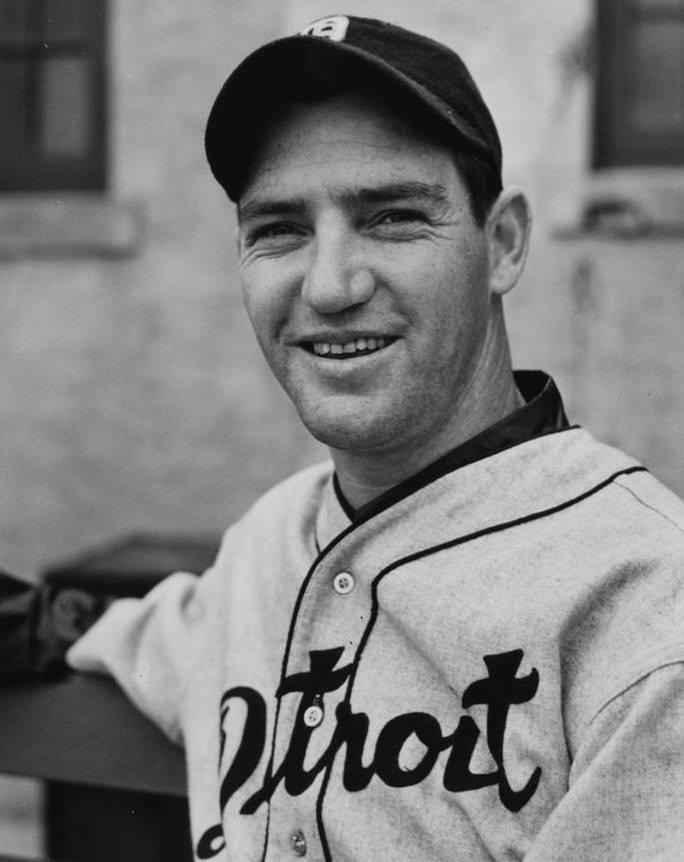Smoky Joe Wood Stats & Facts
Smoky Joe Wood Essentials
Positions: Rightfielder and Pitcher
Bats: Right • Throws: Right
5-11, 180lb (180cm, 81kg)
Born: October 25, 1889, in Kansas City, MO
Died: July 27, 1985 in West Haven, CT
Buried: Wood Family Cemetery, Shohola, PA
High School: Ouray HS (Ouray, CO)
School: University of Kansas (Lawrence, KS)
Debut: August 24, 1908 (3,074th in MLB history)
vs. CHW 4.0 IP, 4 H, 1 SO, 4 BB, 0 ER, L
Last Game: September 24, 1922
vs. NYY 3 AB, 2 H, 0 HR, 1 RBI, 0 SB
Full Name: Joe Wood
Nicknames: Smoky Joe
View Player Bio from the SABR BioProject
Card Collections ENDING SOON ON EBAY
MOST WANTED ROOKIE CARDS
VINTAGE SPORTS TICKETS
Baseball Hall of Famers
Nine Other Players Who Debuted in 1908
Donie Bush
Larry Gardner
Frank Baker
Amos Strunk
Buck Herzog
Rube Marquard
Slim Sallee
Hippo Vaughn
Joe Jackson
All-Time Teammate Team
Coming Soon
Notable Events and Chronology for Career
Biography
In 1912 Walter Johnson said, “Can I throw harder than Joe Wood? Listen, my friend, there’s no man alive can throw harder than Smoky Joe Wood.”
For one season, Smoky Joe Wood was the best pitcher in baseball, and the most feared. The one 22-year-old Smoky Joe Wood had in 1912. Coming off a 23-17 performance for the Red Sox in 1911, including a July 29 no-hitter against St. Louis, the right-hander whipped his lighting-wuick knee-high fastball past opposing batters, Wood won 34 games while losing only 5. He led the league with 35 complete games and ten shutouts and also batted .290. In the World Series, he defeated the Giants with complete games in the first and fourth contests, lost Game Seven, but came back in relief to beat Christy Mathewson in the eighth and final game (Game Two was a tie). Wood had one of the best fastballs in baseball history, comparable to that of his contemporary Walter Johnson.
The two had 27 matchups, with Wood winning 11. At the time of one duel in 1912, Wood had won 13 straight games and was closing in on Johnson’s record of 16 straight, set earlier that season. Before an overflow crowd at Fenway Park, Wood won 1-0. He went on to record two more consecutive victories to tie Johnson’s record but lost his bid to break it. In the spring of 1913, Wood slipped on wet grass while fielding a ground ball and broke his thumb.
He resumed pitching after the cast came off several weeks later, but wasn’t the same. He could still throw, but was pitching with pain, and had lost some velocity. In 1915 he led the league with a .750 winning percentage (15-5) and a 1.49 ERA. But the pain had become unbearable, and, at the age of 26, Wood had to give up baseball.
In 1917, new Red Sox owner Harry Frazee told Wood to work out a deal with another team if he could, and as a result, he sought out the Cleveland Indians, on which his former room-mate Speaker was the big star. He worked out a deal, then, after protracted negotiations, the Indians agreed to pay Boston $ 15,000 for Wood’s contract. The Indians thought they had landed a great pitcher, but he only pitched 15 innings in 1917. He apparently hurt his arm again in a 4-3 loss to the New York Yankees on May 26 – his only start and decision of the year – and he sat out the rest of the season hoping to heal.
Joe Wood was unable to pitch effectively in spring training of 1918 but caught a break anyway: the Indians were short of players because of World War I and injuries, and Wood earned a spot as a utility player. On May 24, he had the greatest game of his career, hitting two home runs – still a rare feat in those days – including the game-winner in the 19th inning for a 3-2 win against the Yankees at the Polo Grounds in New York. For good measure, he also robbed Elmer Miller of an extra-base hit against the left-field fence in the bottom of the 9th to send the game into extra innings. That game heralded his conversion to a full-time outfielder, and in 119 games, he hit a solid .296 (good for 7th in the league) with 66 RBI (which placed him 5th). In spite of his great performance, his playing time went down over the following years as the Indians had a glut of outfielders, including Speaker, and left-handers Jack Graney and Elmer Smith. Wood was relegated to a platoon role, hitting .255 in 72 games in 1919 and .270 in 61 games in 1920. That year, the Indians won the pennant under manager Speaker, after finishing second the previous two season. Wood played in the 1920 World Series, where he started several games and batted sixth in the order. In 1921, still caught in a numbers’ shuffle, he hit .366 in 66 games. He finally got another chance to play regularly in 1922 and hit .297 in 142 games, with 8 home runs and 92 RBI. However, he announced his retirement as a player after the season, for reasons that have not been made entirely clear.
Wood was the baseball coach at Yale University from 1924 to 1942. He also coached his son, Joe Wood, who would play briefly in the majors.
In 1948 Babe Ruth, shortly before his death, visited his old friend and teammate Joe Wood, who had been the coach of the Yale University baseball team. Ruth had his picture taken with Wood and the captain of the baseball team, a good-field, no-hit first baseman named George Bush, who would later become president of the United States in 1989.
In 1981, Roger Angell wrote an account of a famous college game opposing Ron Darling of Yale and Frank Viola of St. John’s University. Smoky Joe Wood watched with Angell. Both pitchers threw shutout ball for 11 innings. St. John’s won the game in the 12th inning.
From – Baseball Library Baseballs 100 Greatest Games
THE JOHNSON-WOOD SHOWDOWN
Boston Red Sox 1, Washington Senators 0
Friday, September 6, 1912, Fenway Park
By the morning of September 6, 1912, the Boston Red Sox had pulled away from the rest of the American League and were well on their way to the World Series. Behind the success that saw the Sox lead mushroom to 14_ games over both Washington and Philadelphia was the fabled Smokey Joe Wood. The dominating right-hander was amassing one of the finest seasons in pitching annals and would finish with a 34-5 regular-season mark and three World Series victories.
With the Washington Senators in town, Walter Johnson was scheduled to take his turn on the mound this day. Wood was not due to pitch until Saturday, but other circumstances turned this into more than just another regular-season game. Johnson earlier in the season had established the American League consecutive win streak record at 16, but Wood was working with an active 13-game streak of his own. Washington management publicly challenged Boston and Wood to face Johnson to afford the “Big Train” an opportunity to protect his record. Newspapers publicized the challenge and treated the hurlers like prizefighters, listing their height, weight, biceps measurement, arm span, and so forth.
Droves of fans piled into the still-new Fenway Park, which had opened its doors for the first time just five months earlier. Thousands more than could be seated found their way along the outfield fences while others occupied dangerous territory along the foul lines. So many patrons jammed the area in front of the grandstand that the players were forced to abandon their dugouts and sit on benches along the lines. No one in the crowd was disappointed with the game, but several spectators were injured by foul balls.
Washington had many more scoring opportunities than the home team. They got a runner as far as second base in the fifth, sixth, eighth, and ninth, but Wood always rose to the challenge: Only once did they advance a runner to third. In the third inning, a leadoff double and a sacrifice put a runner just 90 feet from home. Johnson then hit back to the box, and Wood came home with his throw, getting the runner on a dazzling play at the plate. Wood walked the next two batters, loading the bases, but struck out Danny Moeller to erase the peril.
In only two innings were the Red Sox able to get runners as far as second base against Johnson. In the second frame, with one out, they stroked back-to-back singles, but second baseman Frank LaPorte made a great running catch in short right field to save a run, and Johnson got the last batter to fly out. Finally, with two outs in the sixth, Boston scored the first and only run of the game on back-to-back doubles by Tris Speaker and Duffy Lewis. Both blows rolled into the fans lining the outfield perimeter.
With a 1-0 lead, the huge crowd remained captivated. The climax came in the ninth when, with the tying run at second and one out, Wood fanned the last two Senators.@ET-DC@eyJkeW5hbWljIjp0cnVlLCJjb250ZW50IjoicG9zdF90YWdzIiwic2V0dGluZ3MiOnsiYmVmb3JlIjoiTGVhcm4gTW9yZSBhYm91dCB0aGUgdGVhbXMsIHBsYXllcnMsIGJhbGwgcGFya3MgYW5kIGV2ZW50cyB0aGF0IGhhcHBlbmVkIG9uIHRoaXMgZGF0ZSBpbiBoaXN0b3J5IC0gLSAtIC0gLSAtIC0gIiwiYWZ0ZXIiOiIiLCJsaW5rX3RvX3Rlcm1fcGFnZSI6Im9uIiwic2VwYXJhdG9yIjoiIHwgIiwiY2F0ZWdvcnlfdHlwZSI6InBvc3RfdGFnIn19@
Card Collections ENDING SOON ON EBAY
MOST WANTED ROOKIE CARDS
VINTAGE SPORTS TICKETS
Baseball Hall of Famers
Factoids, Quotes, Milestones and Odd Facts
Coming soon
Other Resources & Links
Coming Soon
If you would like to add a link or add information for player pages, please contact us here.

